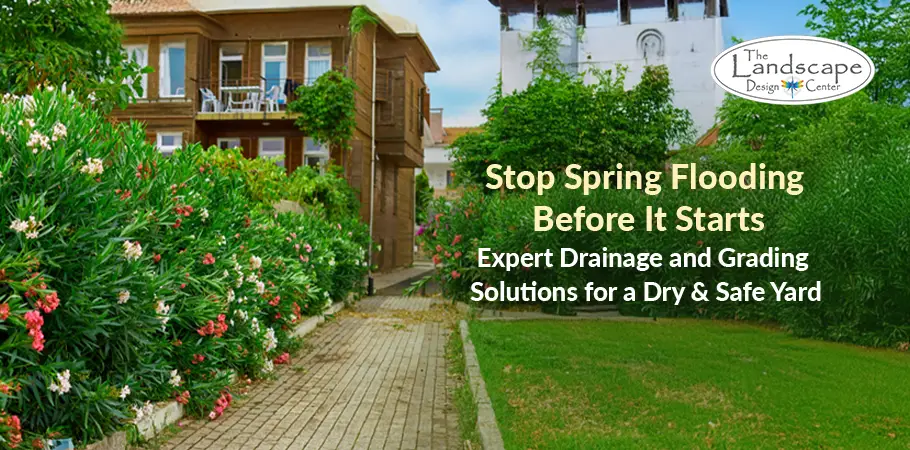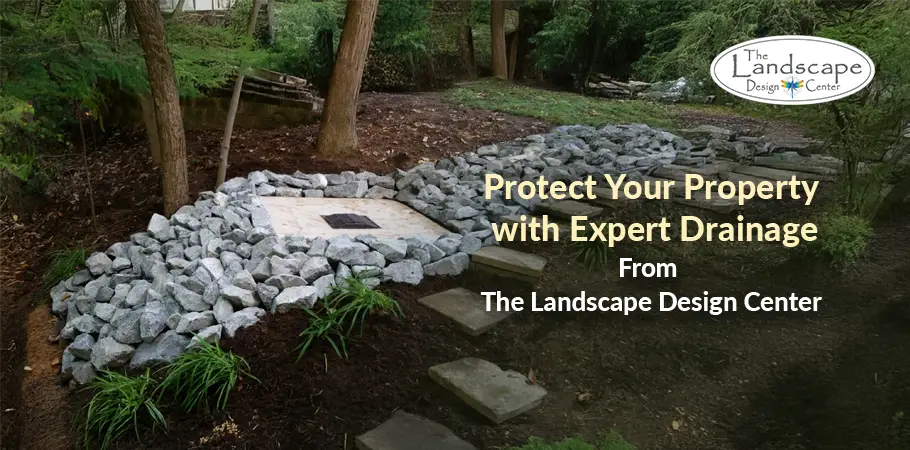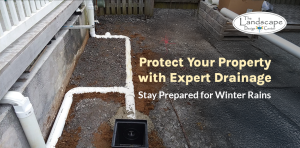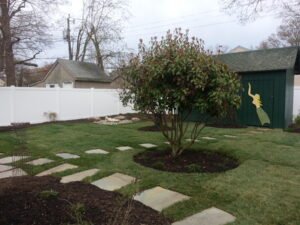
Spring is a season of renewal, but it also brings heavy rainfall and melting snow, which can cause major flooding issues. If your yard isn’t properly graded or lacks an efficient drainage system, water can pool around your home, damaging foundations, drowning plants, and creating a muddy mess. This is where a drainage service becomes crucial.
Without proper water management, excess moisture has nowhere to go, leading to costly repairs and long-term property damage. Fortunately, with the right techniques and planning, you can protect your landscape from flooding and ensure your home stays dry no matter how heavy the rains get.
Let’s dive into the importance of drainage and grading, how they work together, and practical steps to prevent spring flooding.
Why Drainage and Grading Matter
Spring flooding isn’t just an inconvenience—it can lead to serious property damage. Here’s why having a well-thought-out plan is essential.
1. Protects Your Home’s Foundation
Water doesn’t just sit on the surface; it seeps into the ground. If it accumulates around your home’s foundation, it can cause cracks, leaks, and structural instability over time. A well-designed system ensures that excess water flows away, preventing costly foundation repairs in the future.
2. Prevents Soil Erosion
Rainwater that isn’t properly channeled can wash away soil, leading to uneven ground, bare patches, and weakened plant roots. Over time, erosion can reshape your yard in undesirable ways. With the right drainage and grading, soil stays intact while water drains efficiently.
3. Stops Standing Water & Pest Problems
Water pooling in your yard creates an ideal breeding ground for mosquitoes and other pests. Stagnant water also promotes mold, mildew, and fungal growth, which can harm plants and humans. Proper water flow prevents these issues before they start.
4. Prevents Soggy Lawns & Plant Damage
Too much water can drown plants, suffocate roots, and muddy your lawn. If your yard struggles with constant wet spots, adjusting the drainage and grading helps maintain the right moisture balance, allowing plants to thrive.
How to Improve Drainage and Grading in Your Yard
If your yard struggles with water issues every spring, it’s time to take action. Here are some effective solutions to improve drainage and grading before flooding becomes problematic.
1. Identify Drainage Issues
The first step is recognizing the problem areas. After a heavy rain, walk around your property. Look for standing water, soggy patches, or water pools near the house. If water doesn’t drain within 24 hours, your yard likely needs adjustments.
2. Adjust Your Yard’s Slope
One of the simplest yet most effective fixes is ensuring that your yard has the correct slope. Landscaping experts recommend a 2% grade, meaning the ground should slope about 2 inches every 10 feet from your home. This slight incline directs rainwater toward storm drains or designated drainage areas.
3. Install French Drains for Subsurface Drainage
If you’re dealing with persistent water issues, a French drain might be the solution. This gravel-lined trench with a perforated pipe collects and redirects underground water. It’s especially useful for areas where water sits on the surface without a clear escape path.
4. Use Swales for Surface Drainage
A swale is a shallow, grassy channel that naturally moves excess water away. Unlike a ditch, which is an eyesore, a swale blends into your landscaping while improving drainage and grading. It slows down water flow, preventing erosion and allowing water to soak into the ground gradually.
5. Install Retaining Walls for Sloped Yards
If your property is on a hill, rainwater can rush downhill, washing away soil and creating flooding issues at the bottom. A retaining wall helps slow water movement, allowing the soil to absorb moisture instead of allowing runoff to erode your landscape.
The Role of Landscaping Contractors in Drainage and Grading
While some DIY solutions can help with minor drainage issues, professional landscaping contractors bring expertise that ensures long-lasting results. Here’s why hiring a pro might be the best move.
1. Precision Planning & Design
Experienced landscapers understand how different soil types, elevations, and property layouts affect water movement. They assess your yard’s natural drainage patterns and create customized solutions that effectively prevent flooding.
2. Installing Advanced Drainage Systems
Professionals can install various drainage solutions, from underground pipes to dry wells, to manage excess water efficiently. They also integrate these systems seamlessly into your landscaping so they function without ruining the visual appeal of your yard.
3. Long-Term Maintenance & Adjustments
Drainage and grading aren’t just one-time fixes; they require upkeep. Over time, soil settles, drains can clog, and grading may need adjustments. Landscaping experts help maintain your drainage system, ensuring it works effectively for years.
Additional Ways to Prevent Spring Flooding
Beyond grading and drainage systems, here are a few more simple steps to keep water problems at bay:
1. Keep Gutters & Downspouts Clear
If your gutters are clogged, rainwater spills over the edges and pools near your foundation. Regularly clean out leaves and debris, and ensure downspouts extend at least six feet away from your home.
2. Use Water-Absorbing Plants
Some plants naturally soak up excess moisture, helping with yard drainage. Consider planting native grasses, ferns, and water-absorbing perennials in problem areas.
3. Aerate Your Lawn
Compacted soil prevents water from absorbing properly, leading to runoff. Aerating your lawn (poking small holes in the soil) improves water penetration and helps grass grow stronger.
4. Choose Permeable Landscaping Materials
Instead of concrete, which traps water, use permeable materials like gravel, pavers, or mulch. These allow rain to seep into the ground instead of creating surface runoff.
Final Thoughts
Spring rains don’t have to turn your yard into a disaster zone. With the right drainage and grading, you can control how water flows through your landscape, preventing costly damage to your home and lawn.
Whether you tackle minor improvements yourself or hire landscaping contractors, proactive planning ensures your property stays dry, stable, and flood-free. Taking action now will save you from frustration—and expensive repairs—down the line.
So, before the next downpour, ask yourself: Is your yard ready?
Expert Drainage Solutions for a Beautiful, Flood-Free Yard

The Landscape Design Center provides top-tier drainage services and expert landscaping solutions to keep your yard dry, healthy, and visually stunning. Our skilled landscaping contractors design customized drainage and grading plans that protect your property from erosion, standing water, and foundation damage.
With a focus on both function and aesthetics, we ensure water is directed away from your home while enhancing your outdoor space. Whether you need French drains, regrading, or a complete landscape overhaul, we have the expertise to do it right.
We proudly serve Bowie, Odenton, Annapolis, Severna Park, Pasadena, and surrounding areas. Contact us today to schedule a consultation and safeguard your landscape from water damage!


